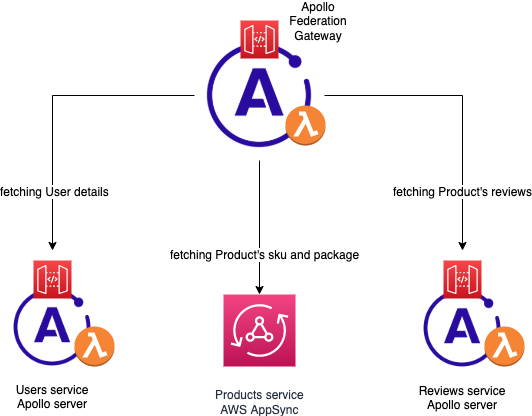Front-End Web & Mobile
Tag: graphql
AWS AppSync Merged APIs Best Practices: Part 3 – Security
In this AWS AppSync Merged API – Best practices series, we cover important topics for developers, architects, and security engineers who are creating and managing AWS AppSync Merged and Source APIs. This multi-part series discusses best practices on schema composition, security, deployment and testing and subscriptions for Merged APIs. AWS AppSync offers Merged APIs, which […]
AWS AppSync now supports JavaScript for all resolvers in GraphQL APIs
AWS AppSync is a managed service that makes it easy to build scalable APIs that connect applications to data. Whether you’re looking to power your web applications with an API that connects to Amazon DynamoDB, or you are looking to build a real-time dashboard that provides live event updates to your users, AppSync can help […]
AWS SAM now supports GraphQL Applications with AWS AppSync
We are pleased to announce that AWS Serverless Application Model (AWS SAM) now supports building serverless GraphQL APIs with AWS AppSync. AWS SAM provides a short-hand syntax for defining AWS serverless resources. AWS AppSync enables developers to connect their applications to data and events with secure, serverless, and performant GraphQL and Pub/Sub APIs. GraphQL APIs […]
Apollo GraphQL Federation with AWS AppSync
This article was written by Florian Chazal, Senior Specialist Solutions Architect, AWS Update (August 2022): This blog post has been updated to comply with the new Apollo Federation spec v2.0. If you are migrating from v1 check the official documentation. Apollo Federation is an architecture and specification used to build and connect multiple distributed backend […]
AWS AppSync now supports projection expressions in DynamoDB resolvers
AWS AppSync is a fully managed service that makes it easy to create and manage GraphQL and real-time APIs. Now, AWS AppSync API developers who use DynamoDB data sources can define projection expressions in their DynamoDB resolvers. Before today, DynamoDB resolvers for AWS AppSync APIs would retrieve all the attributes from a DynamoDB table. Now, […]
Branch Insurance improves hiring diversity and accelerates app development using AWS AppSync
Branch Insurance is an insurance technology startup that provides simple insurance policies and comprehensive bundles to customers in the United States. The company set out to radically simplify the end-user experience for insurance customers by offering bindable prices based on just a couple simple pieces of information – the customer’s name and address. One of Branch’s […]
AWS AppSync pipeline resolvers and functions now support additional array methods and arrow functions
AWS AppSync is a managed service that makes it easy to build scalable APIs that connect applications to data. Developers use AppSync every day to build GraphQL APIs that interact with data sources like Amazon DynamoDB, AWS Lambda, and HTTP APIs. With AppSync, developers can write their resolvers using JavaScript, and run their code on […]
Announcing new GraphQL API features in Amplify Studio
Today, AWS Amplify is announcing support for GraphQL APIs without Conflict Resolution enabled! With this launch, it’s easier than ever to use custom mutations and queries, without needing to manage the underlying conflict resolution protocol. You can still model your data with the same easy-to-use graphical interface. And, we are also bringing improved GraphQL API […]
Secure AWS AppSync with Amazon Cognito using the AWS CDK
In a previous post, we explored how a public API Key for AWS AppSync provides a simple way of allowing access to resources, however, it does come with the following tradeoffs: Expiring after a certain amount of time. The key is passed on the x-api-key header of the request. Making it easy for bad actors […]
Secure AWS AppSync with API Keys using the AWS CDK
AWS AppSync is a managed GraphQL service offered by AWS. As a managed service, there are no servers to keep track of and scaling up and down due to traffic is automatically handled by AWS. In AppSync, there is no concept of a fully-public API. Every request must be protected by one of the following: […]









